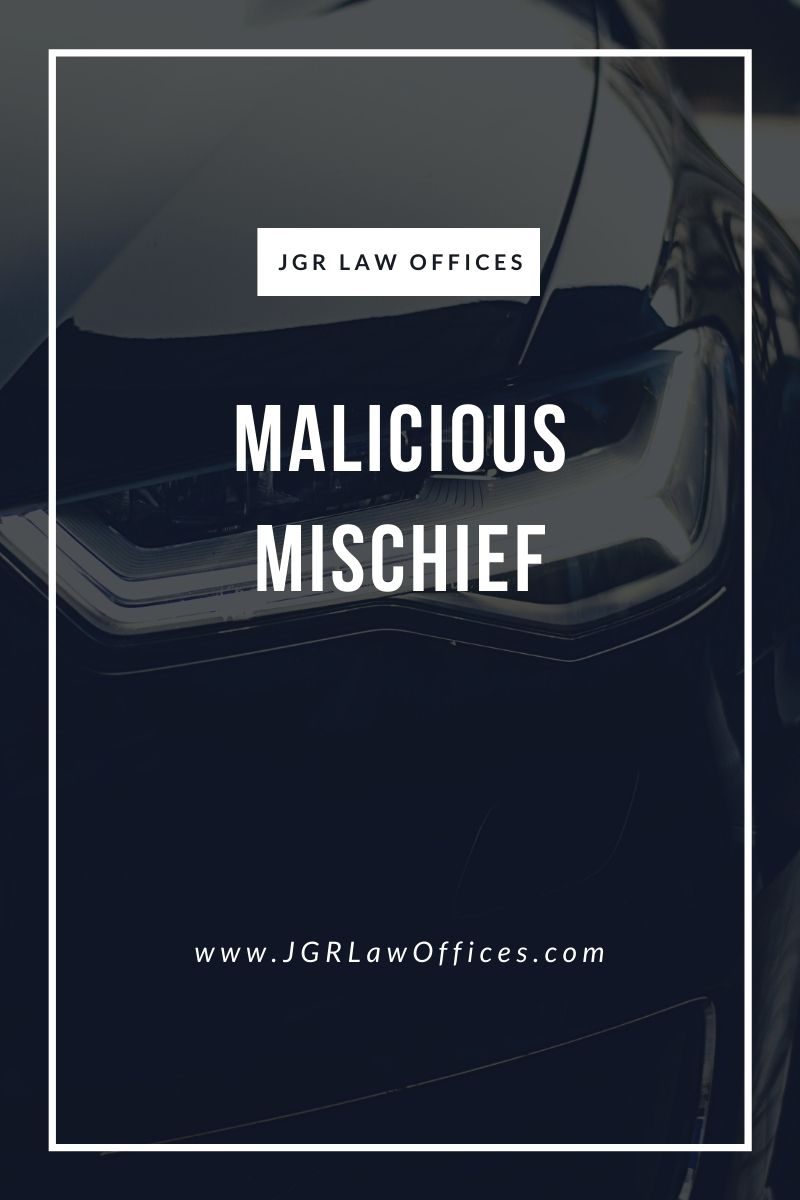Table of Contents
ToggleMalicious Mischief
When someone damages another’s property, Malicious Mischief can be brought against them. The victim of the damage usually initiates an investigation. If the crime occurred within the city limits, the State of Washington or a municipality bring the criminal case of Malicious Mischief against the defendant. Although law enforcement will respond and make an arrest, most people don’t realize they have been charged until they get a summons.
Washington has three levels of malicious mischief. The third degree is a misdemeanor. Second and first degree felonies. These are the elements of the charges:
RCW 9A.48.090Malicious Mischief in the Third Degree (Gross Misdemeanor)
(1) A person is guilty of malicious mischief in the third degree if he or she:
(a) Knowingly and maliciously causes physical damage to the property of another, under circumstances not amounting to malicious mischief in the first or second degree; or
(b) Writes, paints, or draws any inscription, figure, or mark of any type on any public or private building or other structure or any real or personal property owned by any other person [unless the person has obtained permission].
RCW 9A.48.080
Malicious Mischief in the Second Degree (Felony – Class C)
(1) A person is guilty of malicious mischief in the second degree if he or she knowingly and maliciously:
(a) Causes physical damage to the property of another in an amount exceeding seven hundred fifty dollars;
(b) Creates a substantial risk of interruption or impairment of service rendered to the public, by physically damaging or tampering with an emergency vehicle or property of the state, a political subdivision thereof, or a public utility or mode of public transportation, power, or communication; or
(c) Creates a substantial risk of interruption or impairment of service rendered to the public by, without lawful authority, physically damaging, destroying, or removing an official ballot deposit box or ballot drop box or, without lawful authority, damaging, destroying, removing, or tampering with the contents thereof.
RCW 9A.48.070
Malicious Mischief in the First Degree (Felony – Class B)
(1) A person is guilty of malicious mischief in the first degree if he or she knowingly and maliciously:
(a) Causes physical damage to the property of another in an amount exceeding five thousand dollars;
(b) Causes an interruption or impairment of service rendered to the public by physically damaging or tampering with an emergency vehicle or property of the state, a political subdivision thereof, or a public utility or mode of public transportation, power, or communication;
(c) Causes an impairment of the safety, efficiency, or operation of an aircraft by physically damaging or tampering with the aircraft or aircraft equipment, fuel, lubricant, or parts; or
(d) Causes an interruption or impairment of service rendered to the public by, without lawful authority, physically damaging, destroying, or removing an official ballot deposit box or ballot drop box or, without lawful authority, damaging, destroying, removing, or tampering with the contents thereof.
There are many ways to resolve malicious mischief charges
District, Municipal and Superior Courts handle Malicious Mischief cases. The District and Municipal Courts deal with Malicious Mischief in Third Degree cases. These lower Courts provide more options for resolving a Malicious Mischief case than going to trial or pleading guilty. Superior Court handles Malicious Mischief charges in the Second or First Degree.
At the Misdemeanor level
Pre-Trial Diversion Agreements (or PDAs) are common in most jurisdictions. These agreements are between the Defendant or Prosecuting Authority. This type of Diversion Agreement does not give a defendant a sentence. The Court approves the contract between the parties (the Prosecutor and the Defendant). The Malicious Mischief case in the Third Degree is usually dismissed if the defendant follows the terms of the contract. The case is usually dismissed after a lengthy continuance. If all terms have been met, there will never be a conviction.
Another option is to enter into a Compromise for Misdemeanor. This is when the defense attorney for a defendant gets a signature of the property owner on a document that states that the property owner has waived any civil litigation against him and that he wishes the defendant not to be prosecuted. This is the fastest and most cost-effective way to dismiss a Malicious Mischief charge.
A defendant can always go to trial if they do not wish to resolve the Malicious Mischief via a Diversion (PDA), or a Compromise. A defendant can ask the Prosecutor at trial to prove all elements of the Malicious Mischief charges beyond reasonable doubt.
At the Felony level
Although options at the Felony level are more limited than at the Misdemeanor, there are still alternatives. Felony Diversion is often the best way to resolve these cases. Felony Diversion, in a nutshell is when the defendant agrees to enter into a contract where they pay restitution and do community service. They also promise to remain free from any criminal activity.
Drug Court can be an option if a drug addiction is a contributing factor to criminal behavior.
Behavioral Health Court might be an option if mental health problems were a contributing factor to the crime. The BHC can also be completed successfully and the charges will be dismissed.
A good defense attorney might be able convince the prosecuting attorney to lower the Felony-Level Malicious Mischief to Misdemeanor-Level Malicious Mischief in return for a plea.
If none of these options work, a defendant can always bring the matter to trial and force the Prosecuting attorney to prove the entire crime beyond reasonable doubt.
